Pop Up Science
Ken Neill
published in the International Angler
Advances in technology have enabled us to do many things faster, easier, and better. Impossible becomes possible and we can answer more questions than ever before. This is very true in the field of fisheries science.
Dr. John Graves, at the Virginia Institute of Marine Science, is using advanced technology to answer questions very important to sport fishermen. One tool he is using is the pop-up satellite tag (PSAT). PSATs are attached to fish, collect data for a preprogrammed amount of time, and then release from the fish. The tag floats to the surface and transmits the stored data to a satellite.
Marlin are highly prized sport fish. Populations are greatly depressed and the primary source of mortality is pelagic longline gear used to catch swordfish and tuna. Efforts were made to encourage the international longline fleets to release
Atlantic marlin which were still alive when their gear was hauled back. The United States longline boats already release all bycatch of marlin and sailfish. The international community resisted with the reason that there was not enough evidence that released marlin would survive.
Enter the Pop-Up Satellite Tag
In an earlier study, Dr. Graves had used PSATs to show that blue marlin will survive the catch-and-release experience on recreational tackle. It was time to join the longline fleet. Blue marlin, which were alive on haul back, were fitted with PSATS and released. Both 5 and 30 day tags were used. At the appointed times, seven tags released and transmitted their data. All seven blue marlin survived. That was very good news but what about white
marlin? A similar study was conducted with white marlin caught on longline gear. Nineteen PSATs reported. Seventeen of the white marlin lived while two fish did not survive for a 89.5% successful release rate. The results of these studies had an immediate impact. An international agreement was signed to release all live Atlantic marlin caught on longline gear. A more recent study looked at sailfish caught on longline gear. Again, it was shown that live sailfish have a very good chance of survival if they are released from longline gear. Sailfish had a 88.2% survival rate. The results from this study has not lead to an agreement from the international community to release longline-caught sailfish. At least, not yet.
White Marlin
The main impetus for these studies was the very depressed state of white marlin stocks. White marlin had reached a point where very serious consideration was being given to listing them under the Endangered Species Act. The longline studies had shown that simply letting these fish go would have a positive impact on by-catch mortality. The white marlin is a very popular recreational fish. The vast majority of these fish are released but how many live? Most anglers targeting white marlin will troll small, bare (naked), natural baits (ballyhoo) rigged on J-hooks. When the marlin hits the bait, the reel is put in free-spool to allow the bait to “drop back” so that the fish has a chance to eat the bait prior to putting the reel in gear to hook the fish. J-hooks were commonly used even by boats comfortable fishing with circle hooks in sailfish hot spots like Guatemala and Costa Rica. When these same crews were in white marlin areas like Venezuela or the mid-Atlantic region of the United States, they still preferred using
J-hooks. Dr. Graves placed PSATs in 20 white marlin caught on J-hooks and in 20 white marlin caught on circle hooks. The results were dramatic. All of the fish caught on circle hooks survived. 35% of the white marlin caught on J-hooks died after release. Again this study caused regulatory changes to try and help white marlin stocks and to keep them off the Endangered Species List. The United States required anglers to use non-offset circle hooks while fishing in marlin tournaments with natural baits. The white marlin study was expanded to look at different types of circle hooks. Conventional, wide-gap, and offset circle hooks were compared. The PSAT data showed that it just did not matter. All of the circle hooks performed very well at eliminating post-release mortality. Eighty white marlin were tagged in this study. Many more were caught on the various hooks, observed for hook placement, any bleeding, and released. A large number of white marlin were caught on both J and circle hooks. I was fortunate to be one of the anglers helping Dr. Graves with this study. It was a very valuable learning experience. I had to give up my J-hooks and learn circle hooks. My unscientific observations are that success with the various circle hooks will vary with how you attach your leader to the hook and the different techniques to rig your ballyhoo. If you seem to be missing more fish than you did with J-hooks, just a little change can make a big difference. There were days we did seem to have better success with J-hooks but other days, the circles caught more fish. Overall, I am confidant that the circle hooks will catch white marlin at least as well as J-hooks. Today, whenever we are targeting white marlin, we are pulling circle hooks even when we are not fishing a tournament.
Blue Marlin
The circle hook rule also affected blue marlin tournament anglers. Some of the favorite blue marlin baits consists of a large natural bait, horse ballyhoo or Spanish mackerel, rigged on a J-hook and pulled behind a lure like some kind of chugger or an Ilander type bait. Anglers complained that they were not catching white marlin with these baits and that they were not hurting the blue marlin. An ambitious study was undertaken to find out. Sixty blue marlin
were fitted with PSATs. Half of the fish were caught on circle hooks. The other half were caught on some type of natural bait/lure/J-hook combination. The results have not been published yet but the short story is, blue marlin are not white marlin. Blue marlin survive the catch and release experience very well regardless of the hook type. It remains to be seen if this new information will lead to a modification in the circle hook regulation.
Not Just Survival Data
PSATs record detailed information about the fish’s surroundings over time. The white marlin study showed that these fish are not just surface dwellers. They spend much of their time diving into the deep searching for food. These dives may be over 100 fathoms down. White marlin will spend about half of their time in the top 33 feet of the water column. Much of this surface time may be used to warm their core temperature in preparation for the
next dive. Average distance traveled (as the bird flies) was 15 nautical miles per day with a maximum distance of 63 nautical miles in a day. White marlin spend about 85% of their time in water from 75 to 84 degrees so this is the temperature range you should look for when fishing for them.
Going Coastal
These tags are large and expensive. PSATs have been used to study large, pelagic fish. A new generation of these tags are significantly smaller which opens up the possibility of using this technology to study some of the coastal fish. An opportunity arose to try this with Virginia’s wintertime striped bass fishery. Large striped bass spend the winter along Virginia’s coast and inside the Chesapeake Bay. Many of the largest fish are caught on live eels. The coastal fishing season is open throughout the winter but the bay season closes at the end of December. Tremendous catch-and-release fishing continues however. This is great for the economy but there was concern that there might be a significant release mortality occurring. Previous mortality studies of striped bass did not match the environmental conditions or size of fish being caught at the mouth of the
Chesapeake Bay in the wintertime. A pilot study was funded to use the new generation PSAT. Eight tags reported one month after being deployed on large striped caught on live eels. Half of the fish were caught on circle hooks and half on J-hooks. A larger study should be done but in this limited study, there was no release mortality. J-hooks were more likely to deep-hook the fish but even the deep-hooked fish were alive 30 days after release. These fish spent most of their time 16 to 32 feet deep. All of them went deeper than 65 feet but none went as far as 100 feet deep. The average water temperature was 44.6 to 46.4 degrees F. In 30 days the fish traveled from 12.6 to 59.1 nautical miles. One group of 3 fish, tagged the same day at the same location at the mouth of the Chesapeake Bay went in 3 different directions. One went up into the bay, another went up the coast and the third traveled south down the coast. These fish were probably heading towards their spawning grounds indicating Hudson, Chesapeake, and Roanoke striped bass stocks were all feeding together at the mouth of the Chesapeake Bay.
Red Drum
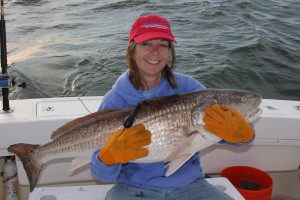 The performance of the PSATs on striped bass indicated that this technology could be used to answer questions about large red drum. A single red drum was tagged with a 30-day tag. This one-fish pilot study was a success so a larger study was conducted this past year. Fifteen large red drum were caught, tagged and released at the same location during Memorial Day Weekend. The fish were caught in very shallow water at the surf line of Fisherman’s Island at the mouth of the Chesapeake Bay. Five fish were fitted with 30-day tags, another five were fitted with 3-month tags, and the last five were fitted with 6-month tags. The data is still being analyzed to determine what these fish were doing during their time at large. All of the fish survived. At 30 days, three of the fish were on Nautilus Shoal, very close to where they were released.
The performance of the PSATs on striped bass indicated that this technology could be used to answer questions about large red drum. A single red drum was tagged with a 30-day tag. This one-fish pilot study was a success so a larger study was conducted this past year. Fifteen large red drum were caught, tagged and released at the same location during Memorial Day Weekend. The fish were caught in very shallow water at the surf line of Fisherman’s Island at the mouth of the Chesapeake Bay. Five fish were fitted with 30-day tags, another five were fitted with 3-month tags, and the last five were fitted with 6-month tags. The data is still being analyzed to determine what these fish were doing during their time at large. All of the fish survived. At 30 days, three of the fish were on Nautilus Shoal, very close to where they were released. 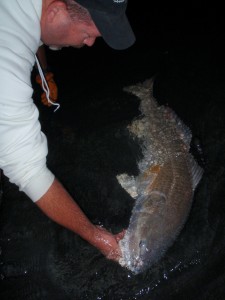 One fish had moved up into the Chesapeake Bay. The last fish had moved to the other side of the mouth of the bay. At 3 months, one fish was up in the bay at the mouth of the York River. The rest were all offshore, around the 30 to 50 fathom curves. At 6 months, the fish had moved back into the coast and were near Cape Lookout, NC. The original red drum tagged spent most time in water 0 to 16 feet deep and went as deep as 56 feet. It stayed in water from 60 to 78 degrees. Detailed information about the daily life of large red drum will be published soon.
One fish had moved up into the Chesapeake Bay. The last fish had moved to the other side of the mouth of the bay. At 3 months, one fish was up in the bay at the mouth of the York River. The rest were all offshore, around the 30 to 50 fathom curves. At 6 months, the fish had moved back into the coast and were near Cape Lookout, NC. The original red drum tagged spent most time in water 0 to 16 feet deep and went as deep as 56 feet. It stayed in water from 60 to 78 degrees. Detailed information about the daily life of large red drum will be published soon.
PSAT technology is providing us with the means to answer questions about both offshore and inshore fish. The tags are still expensive but with inshore fish, this is somewhat offset by a higher chance of recovering the tags. The tags can be re-fitted at a fraction of the cost of a new tag. Also, data transmission is about 90% to the satellite. With the tag in hand, 100% of the stored data is collected. So far, 9 of 26 inshore tags have been recovered to be used again. Now we have to decide what questions we want answered to use them for.
John E. Graves received a Ph.D. from Scripps Institution of Oceanography in 1981. He is currently a Professor of Marine Science at the Virginia Institute of Marine Science, College of William and Mary where he serves as Fisheries Department Chair. He is the Chairman of the U.S. Advisory Committee to the International Commission for the Conservation of Atlantic Tunas (ICCAT). He serves on both the Billfish Advisory Panel and the Highly Migratory Species Advisory Panel of the National Marine Fisheries Service. To learn more about Dr. Graves and his research, visit: www.vims.edu/about/directory/faculty/graves_je.php .
Dr. Ken Neill, III is an IGFA Representative representing the Virginia Beach area. He is a practicing dentist who spends much of his time on his boat, the Healthy Grin, aiding in fisheries research.


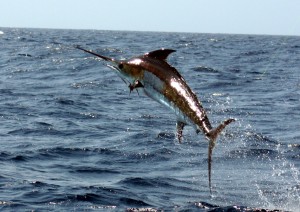
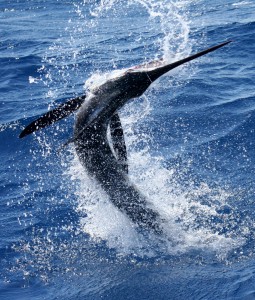
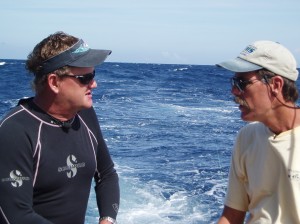

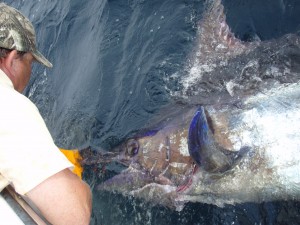
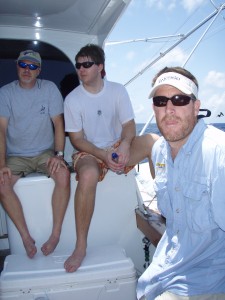
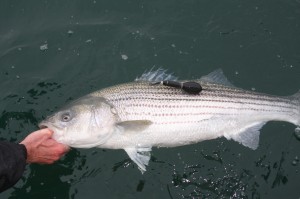
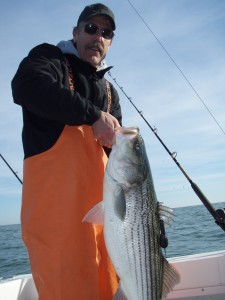
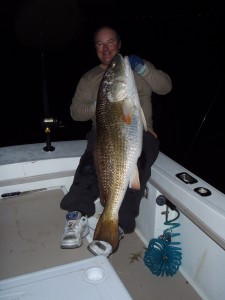
AMAZING! THANK YOU!